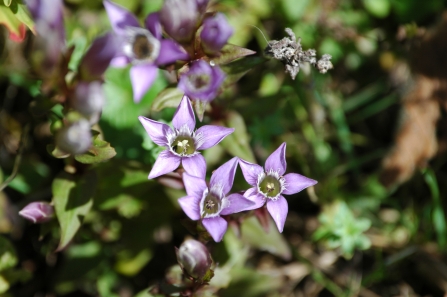
Our top 10 wildlife sightings for August
Yoesden bank by Justin Warhurst

Chiltern gentians
The Chiltern gentian is a rare flower, only found in the UK, and largely confined here to a few spots in the Chiltern Hills. Its wrinkled, tubular flowers erupt into a pentagram of purple petals with an alluring green centre and a fringe of white hairs. We are extremely lucky to have them at several of our nature reserve including Homefield Wood near Marlow and Warburg near Henley, and this is the month to see them!
How to tell the difference between Chiltern and autumn gentians.
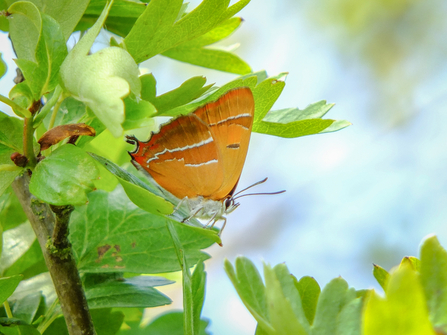
A brown hairstreak butterfly at BBOWT's Ludgershall Meadows nature reserve. Picture: Tom Atkins
Brown hairstreaks
Brown hairstreaks are among our most elusive butterflies. As well as the fact that they spend most of their time in treetops feeding on aphid honeydew, populations in the UK have plummeted due to habitat loss. We are delighted to have stable populations at Whitecross Green Wood near Kidlington and our Upper Ray Meadows reserves near Bicester where, each year, volunteers help us with the painstaking task of searching for their miniscule eggs in hedgerows!
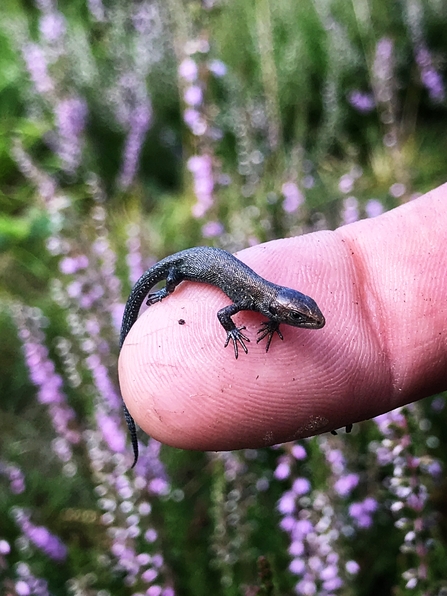
Baby common lizard (Zootoca vivipara). Picture: Kevin Caster.
Baby lizards
Another highlight for August is baby lizards. Although less common across England than they once were, we have healthy populations of common lizards at several of our reserves including Snelsmore Common near Newbury where they can be spotted throughout the summer sunbathing in the heather. Juveniles are darker in colour than adults, often with an olive-green tint, and tend to hang around in small groups.
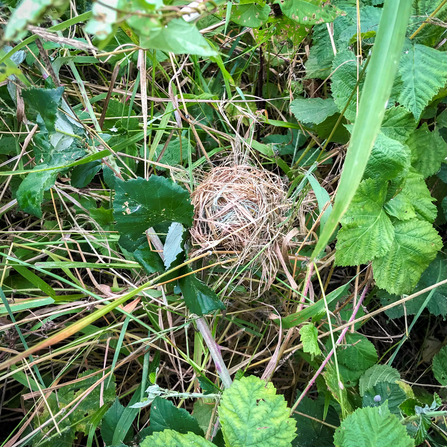
A harvest mouse nest in a field margin in West Oxfordshire. Picture: Lucy Stoddart
Harvest mouse nests
The harvest mouse is tiny - an adult can weigh as little as a 2p piece! It prefers habitats with long grass, but you are most likely to spot its perfectly round woven-grass nests in which the female will give birth to as many as six young. Our mammal officer Lucy found the fantastic example above in a field margin in West Oxfordshire last year – let us know if you spot one!
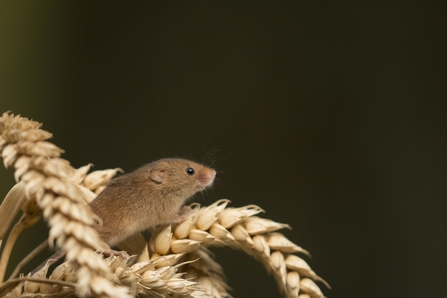
A harvest mouse clambering up an ear of wheat. Picture: Rob Bates
Helleborines
The broad-leaved helleborine is a tall, dark orchid with leaves that spiral around the stem and purple-tinged, drooping flowers. It flowers from July to September and can mostly be seen in woodlands and scrub. Some species of wasp and bee have been noted becoming 'intoxicated' after visiting these orchids for nectar - it appears that the flowers can contain a kind of alcohol as a result of a fungus! The bees like it so much, they come back for more, ensuring the flower is pollinated. Look out for it at our Aston Clinton Ragpits reserve near Aylesbury.
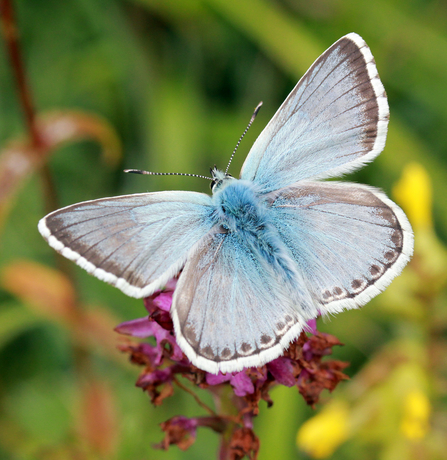
Chalkhill blue butterfly © Jim Higham
All the blues
Our sprawling chalk grassland reserve on the hillside at Yoesden near High Wycombe is a treasure trove of butterflies in August. In particular, it can be a fantastic place to spot three of our rarer blues on the same day - adonis, chalkhill and small. Please let us know what you spot!
Find out more about our brilliant blue butterflies and their surprising relationships with ants.
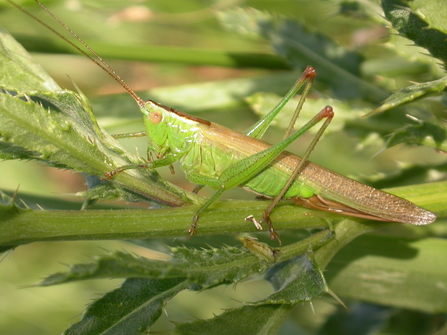
Long-winged conehead bush cricket. Picture: Giles San Martin
Long-winged coneheads
With its angular head and dart-shaped body, the long-winged conehead is one of our most striking crickets - yet it still manages to disappear into the undergrowth with its perfect camouflage. The best way to find it is to listen out for its high-pitched stridulation, which sounds a bit like a water sprinkler on the fastest setting.
Long-winged conehead bush cricket (https://www.youtube.com/watch?v=Q0DVcTKL6q8)
A long-winged conehead bush cricket stridulating. Nature Through My Eyes/ YouTube
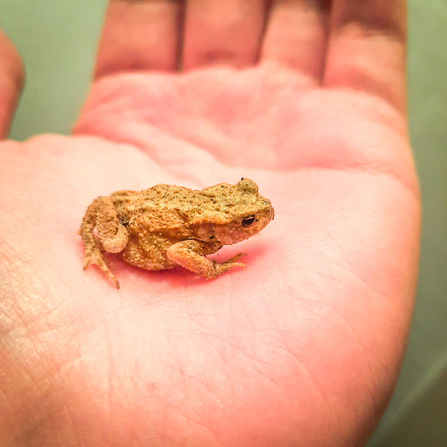
Common toad toadlet. Picture: Pete Hughes
Toadlets
This year's brood of common toad tadpoles have now sprouted legs and begun migrating away from their birth ponds to find places to hide over winter under rocks, leaves and logs. Anyone who saw David Attenborough's Wild Isles series will know this migration is fraught with dangers, so creating an area in your garden where amphibians can hide can make a big difference.
A baby hedgehog or hoglet. Picture: Gillian Day
Hedgehoglets
Another animal which definitely needs our help is the hedgehog. In the past two decades, the number of hedgehogs in the UK has plummeted from an estimated 1.5 million to around 500,000. Housing estates with impenetrable garden fences, pesticides killing invertebrate food sources and general pollution are all contributory factors. Putting out bowls of water is a great, simple way to help - especially with vulnerable hoglets wandering around at the hottest time of the year.

